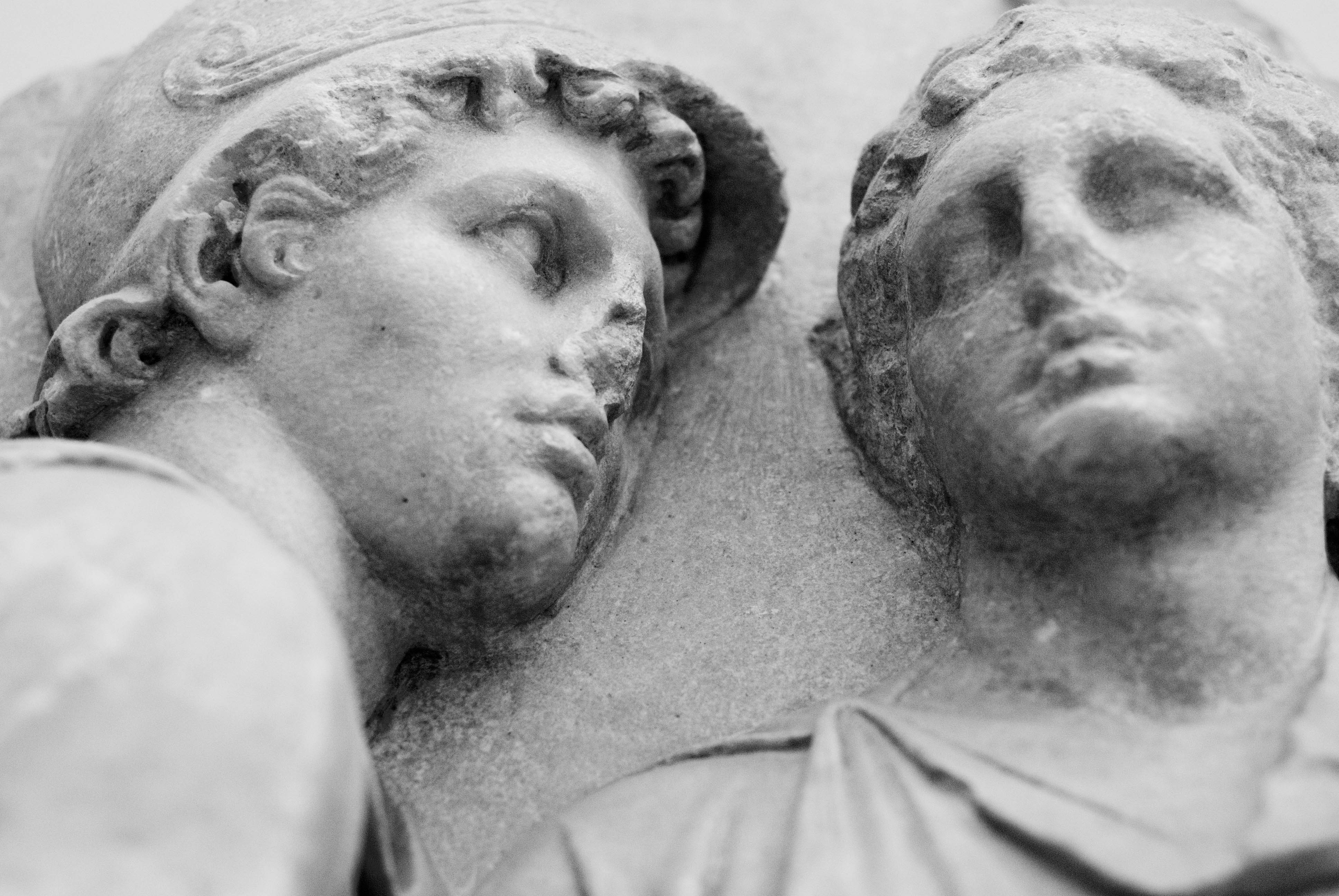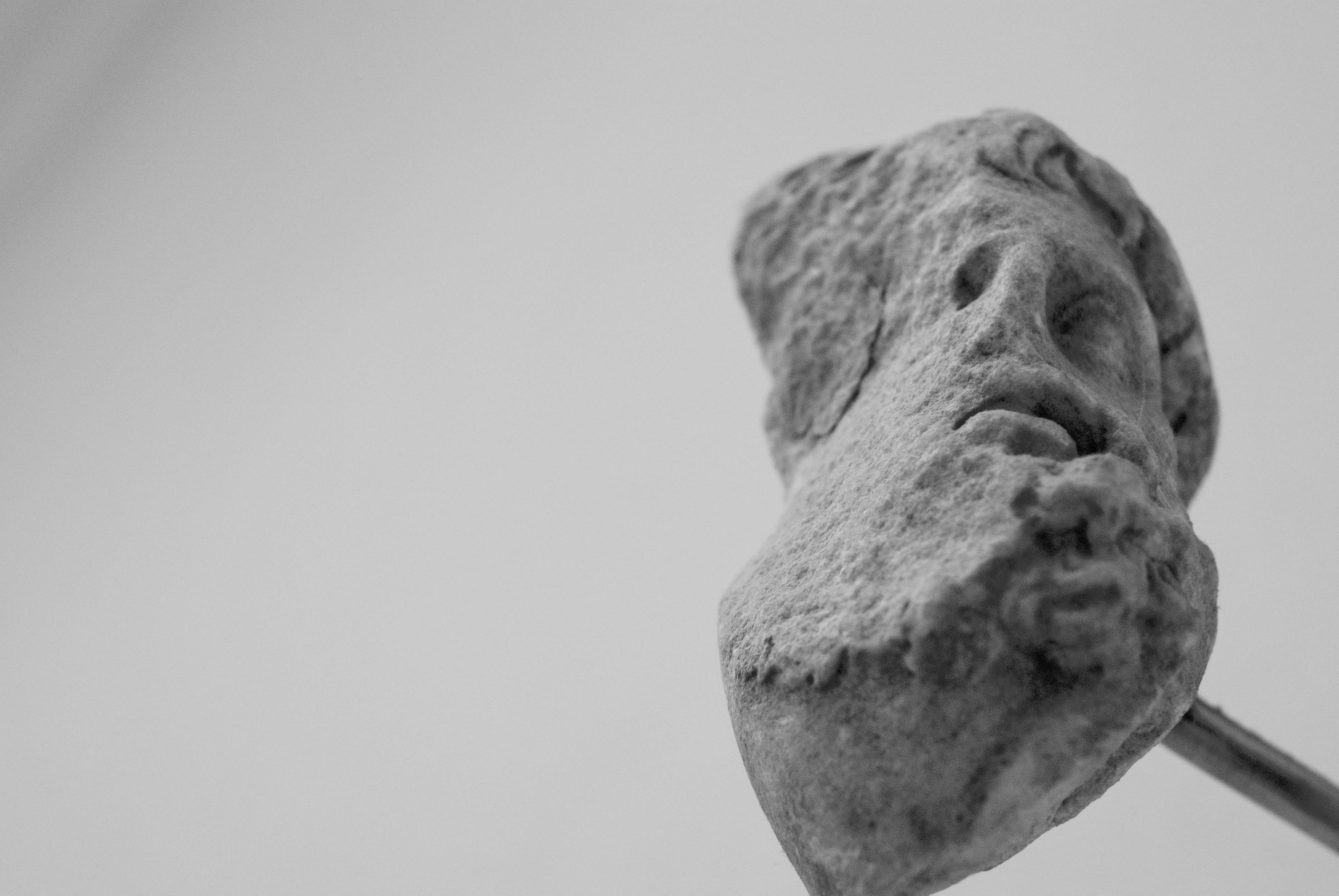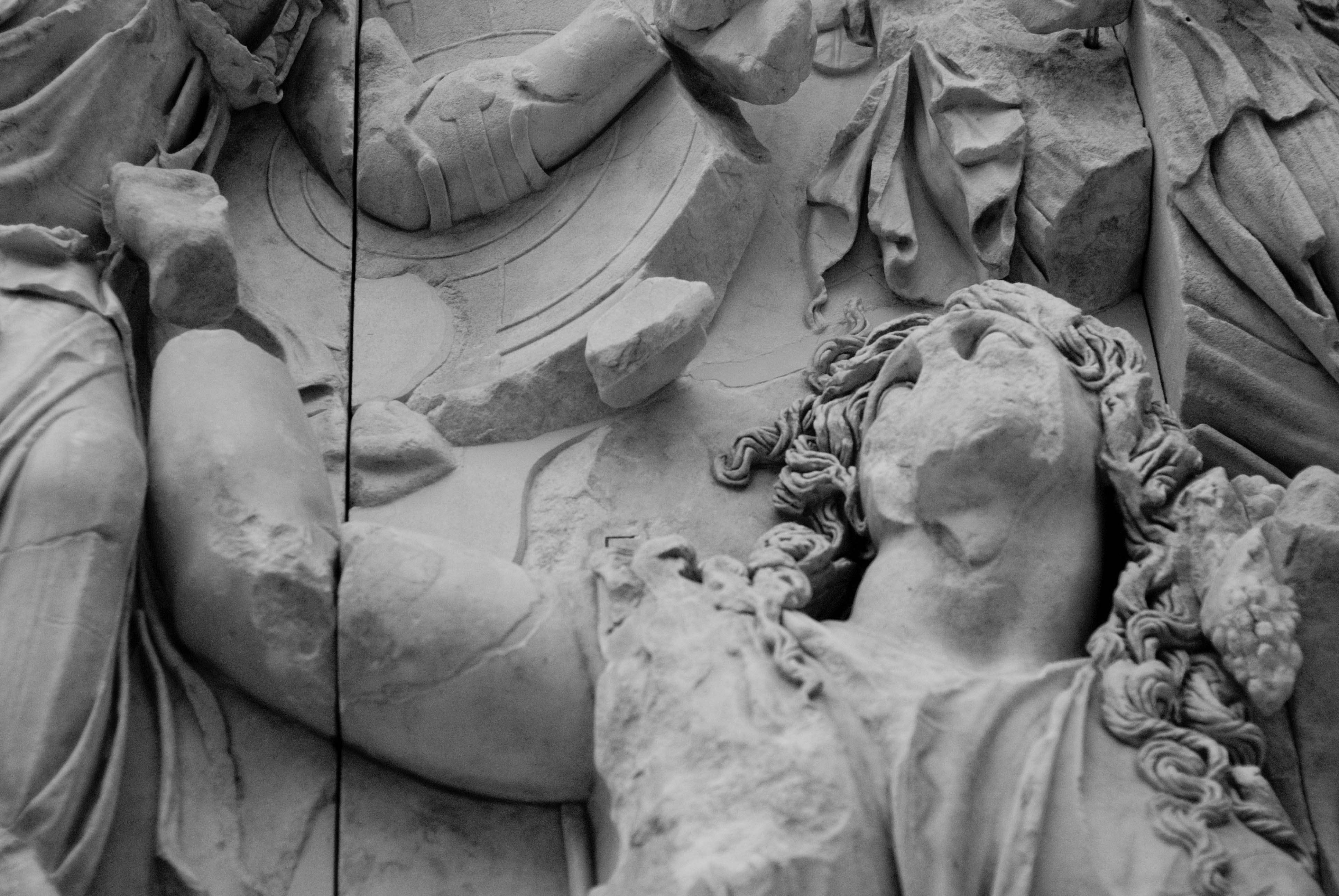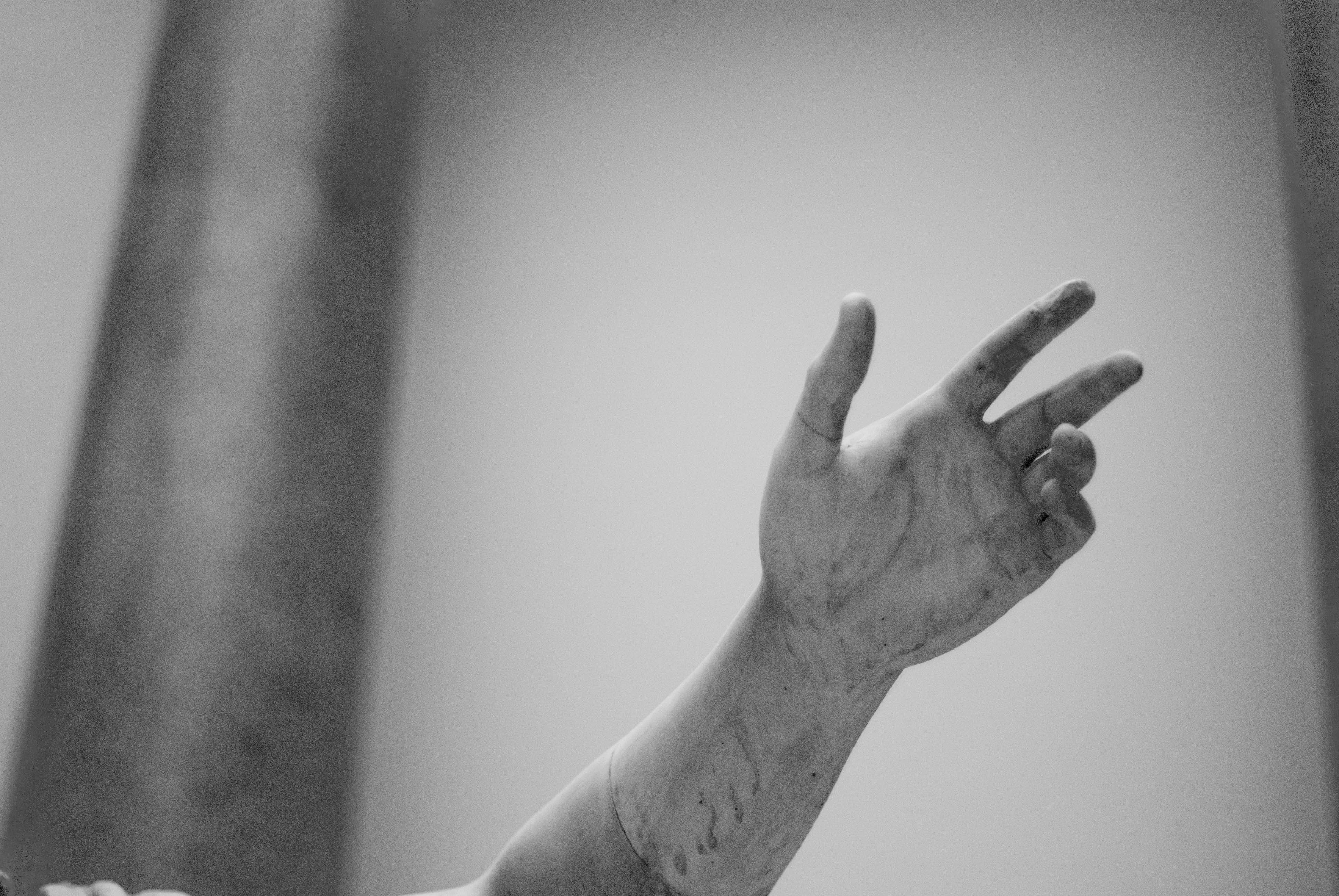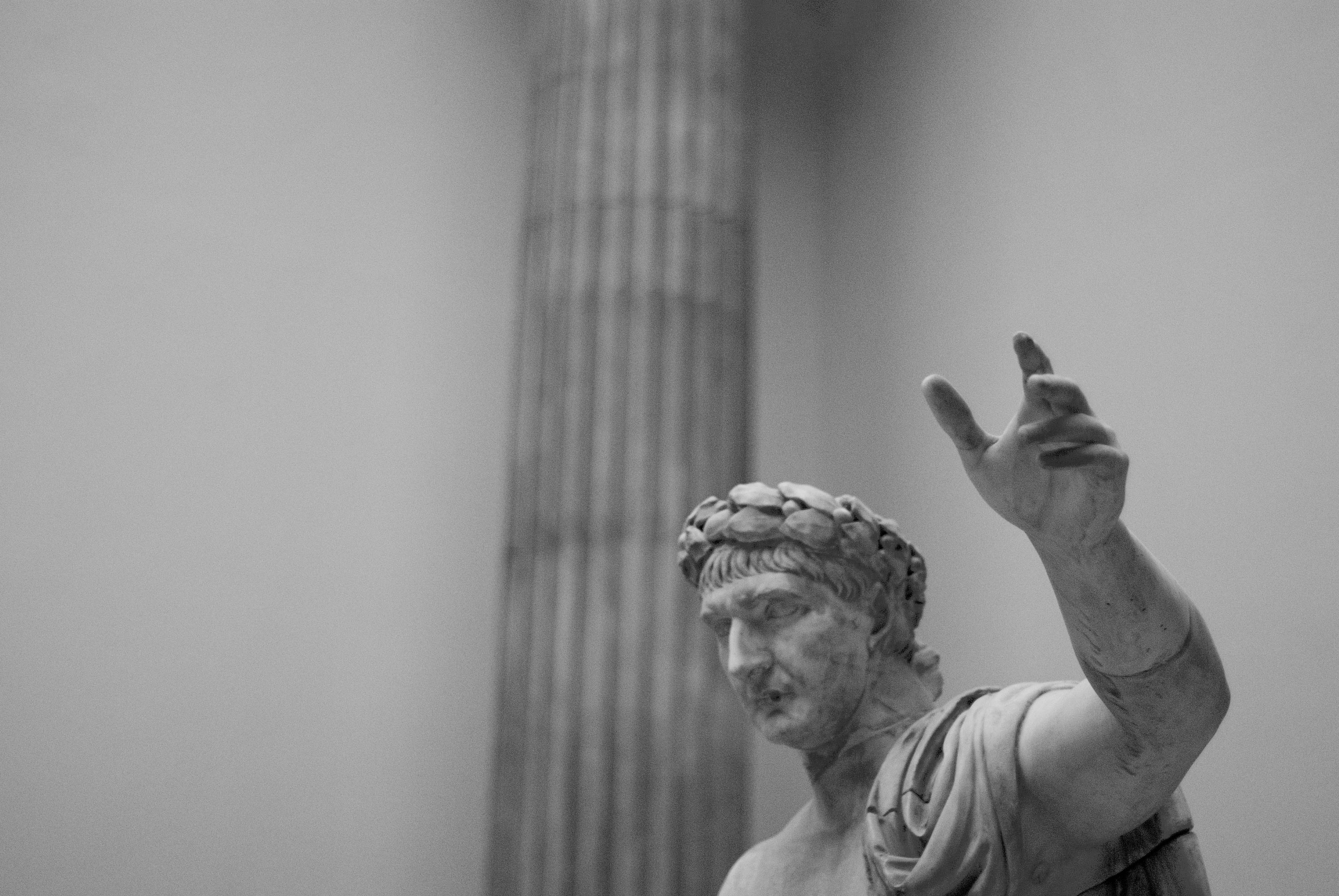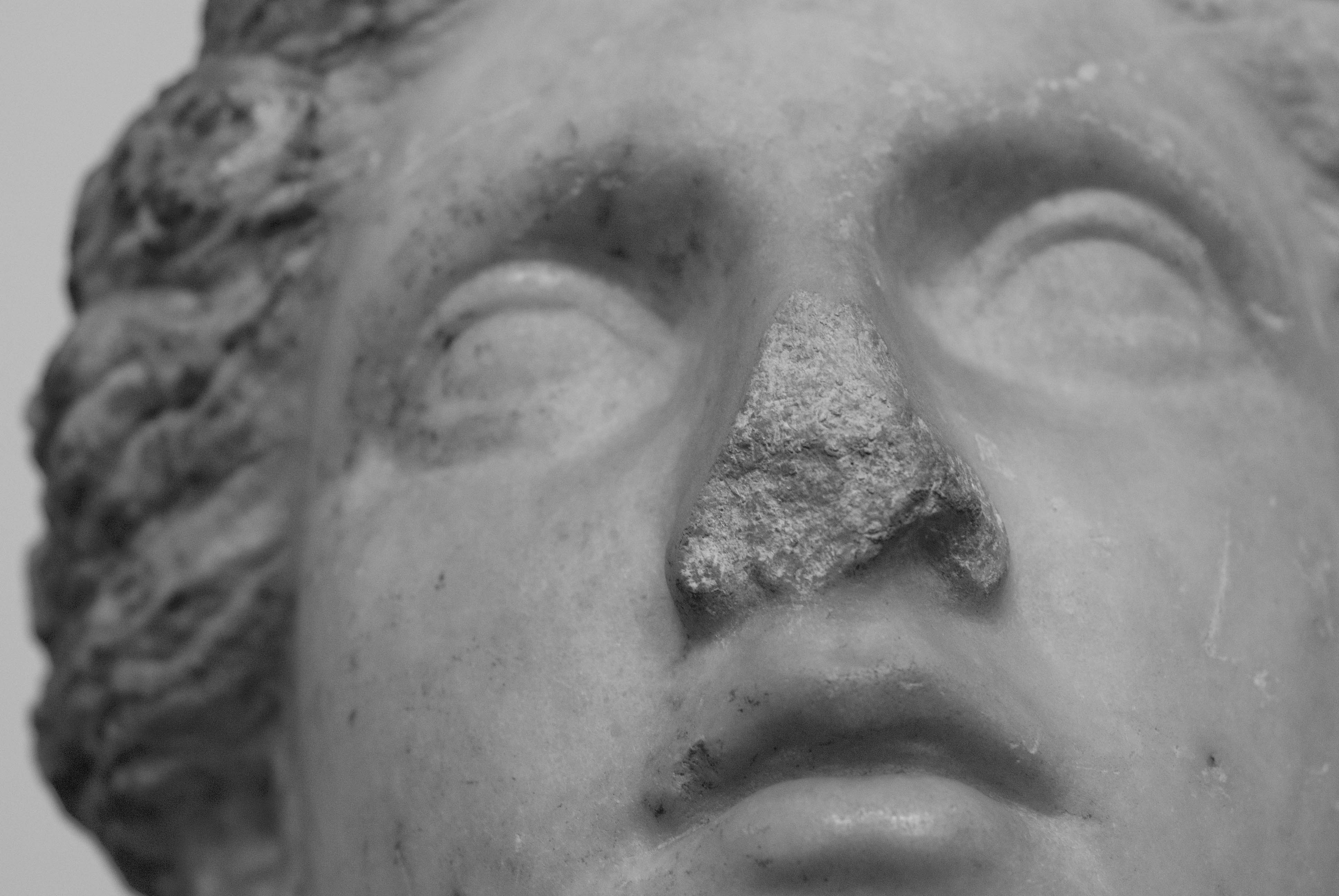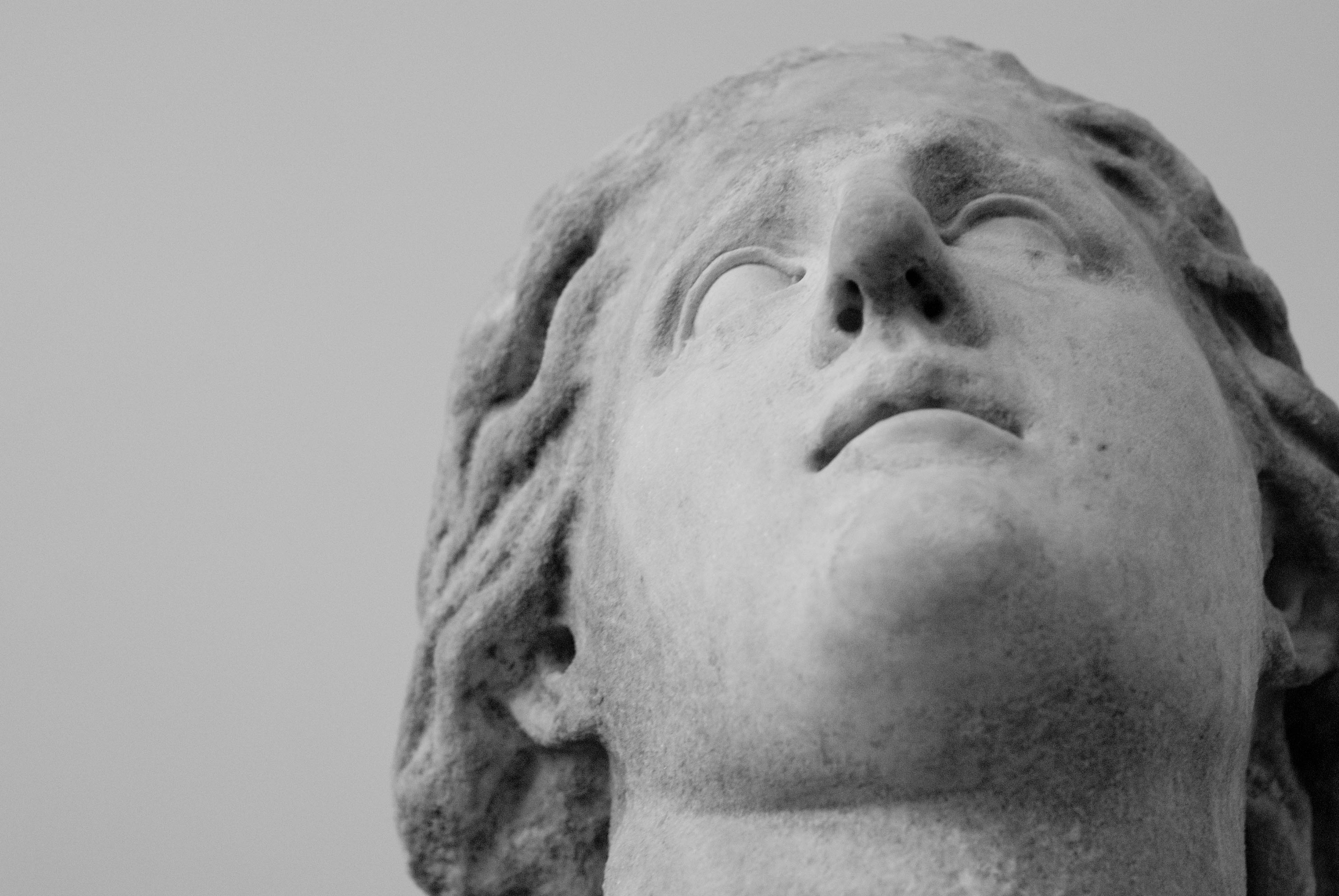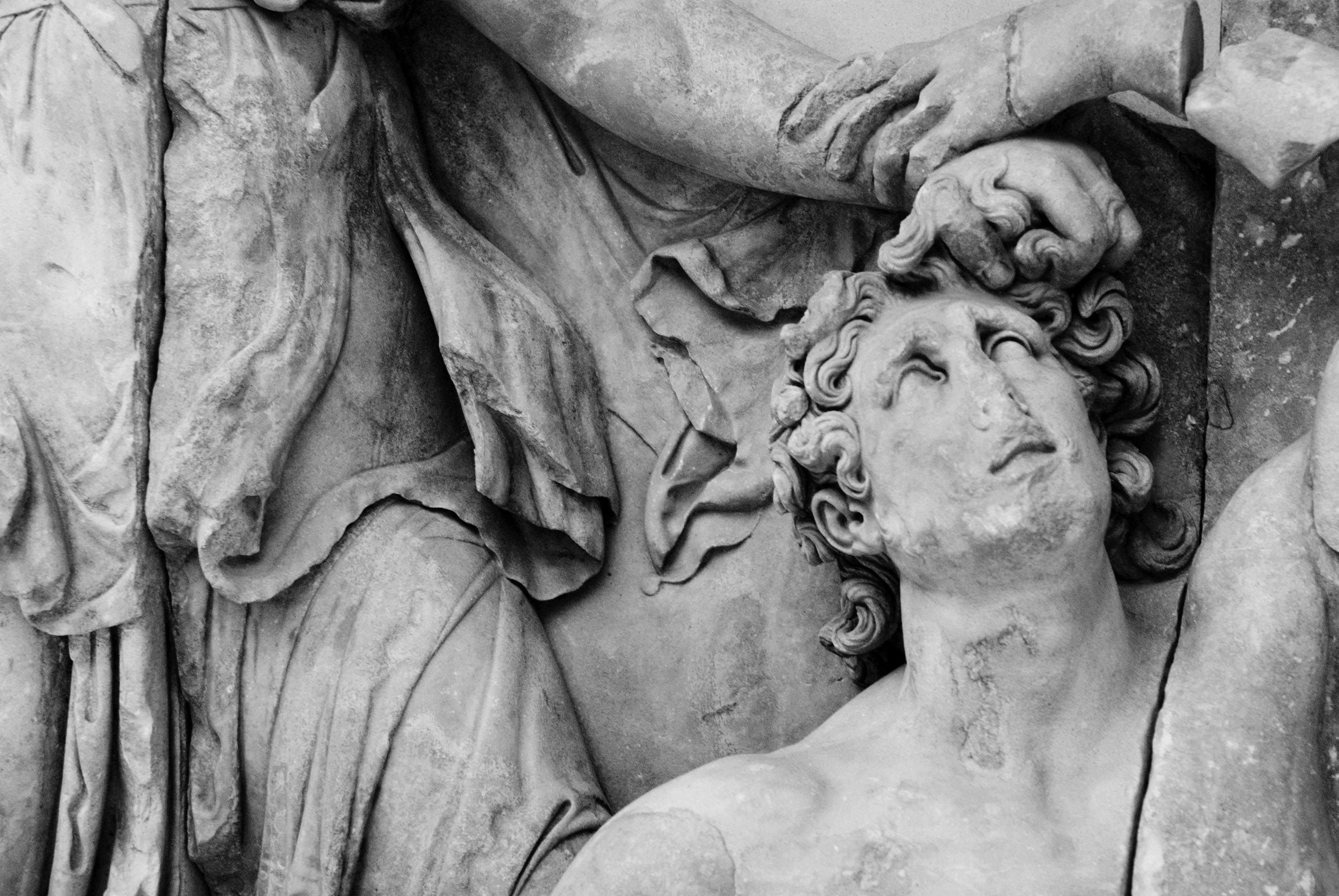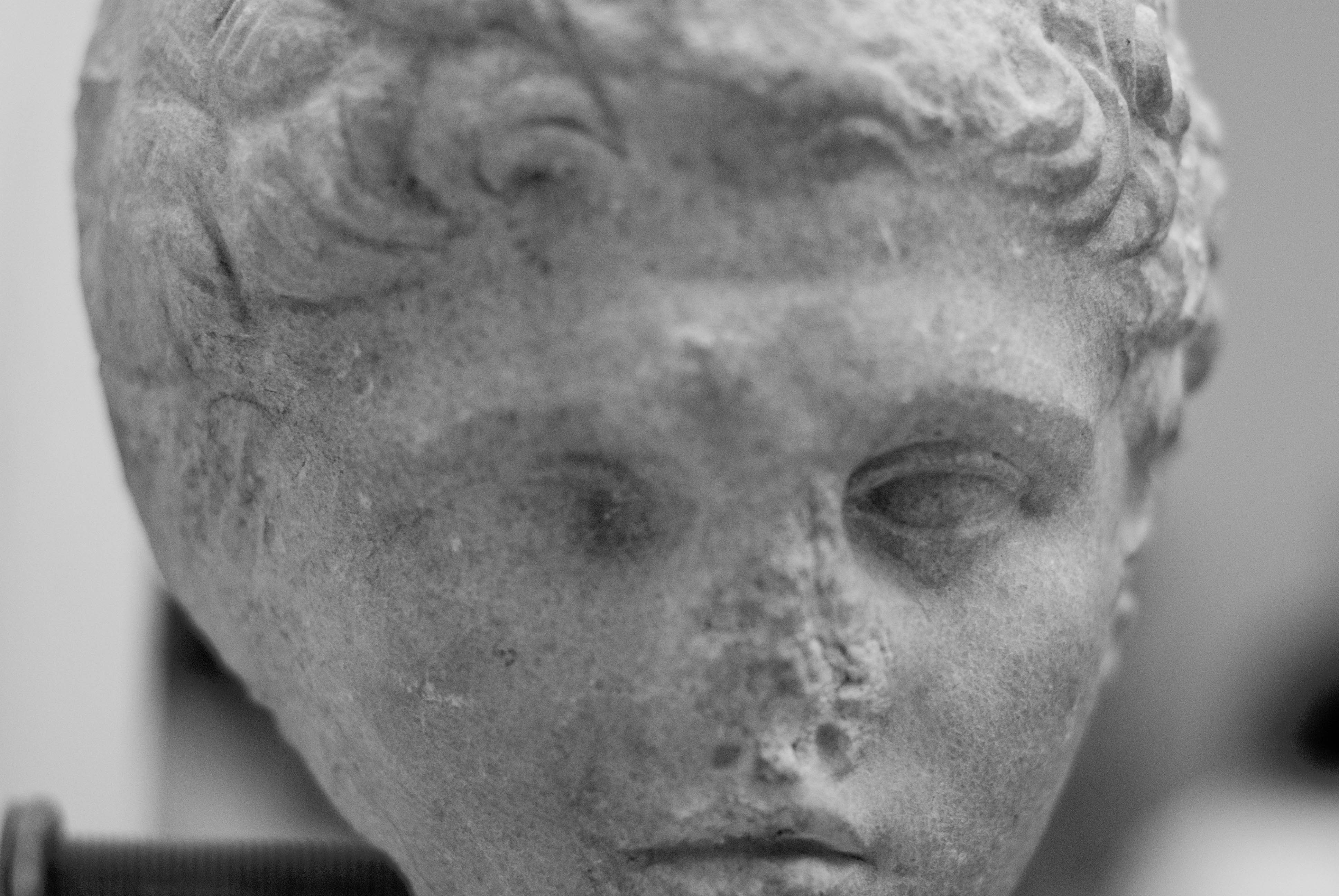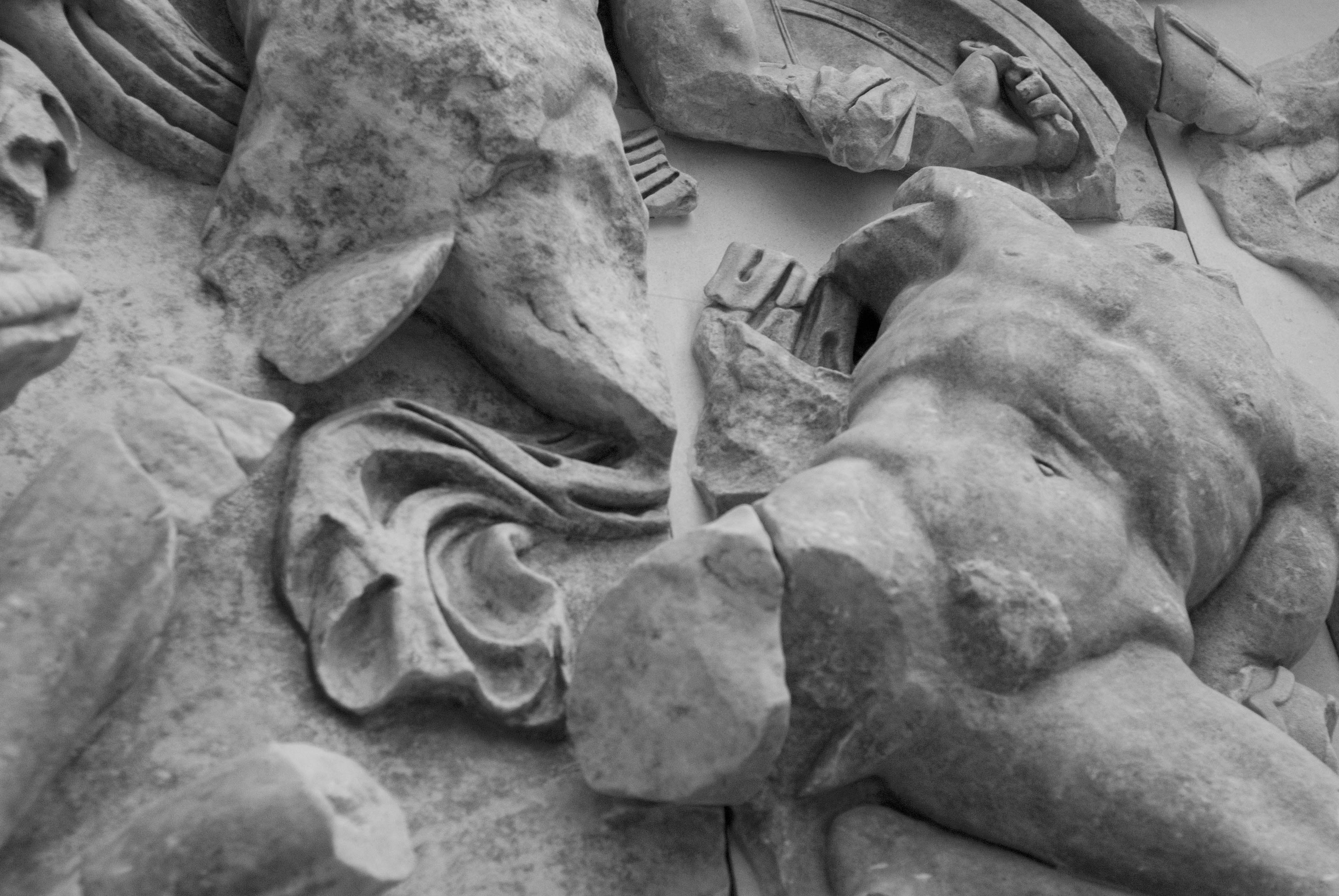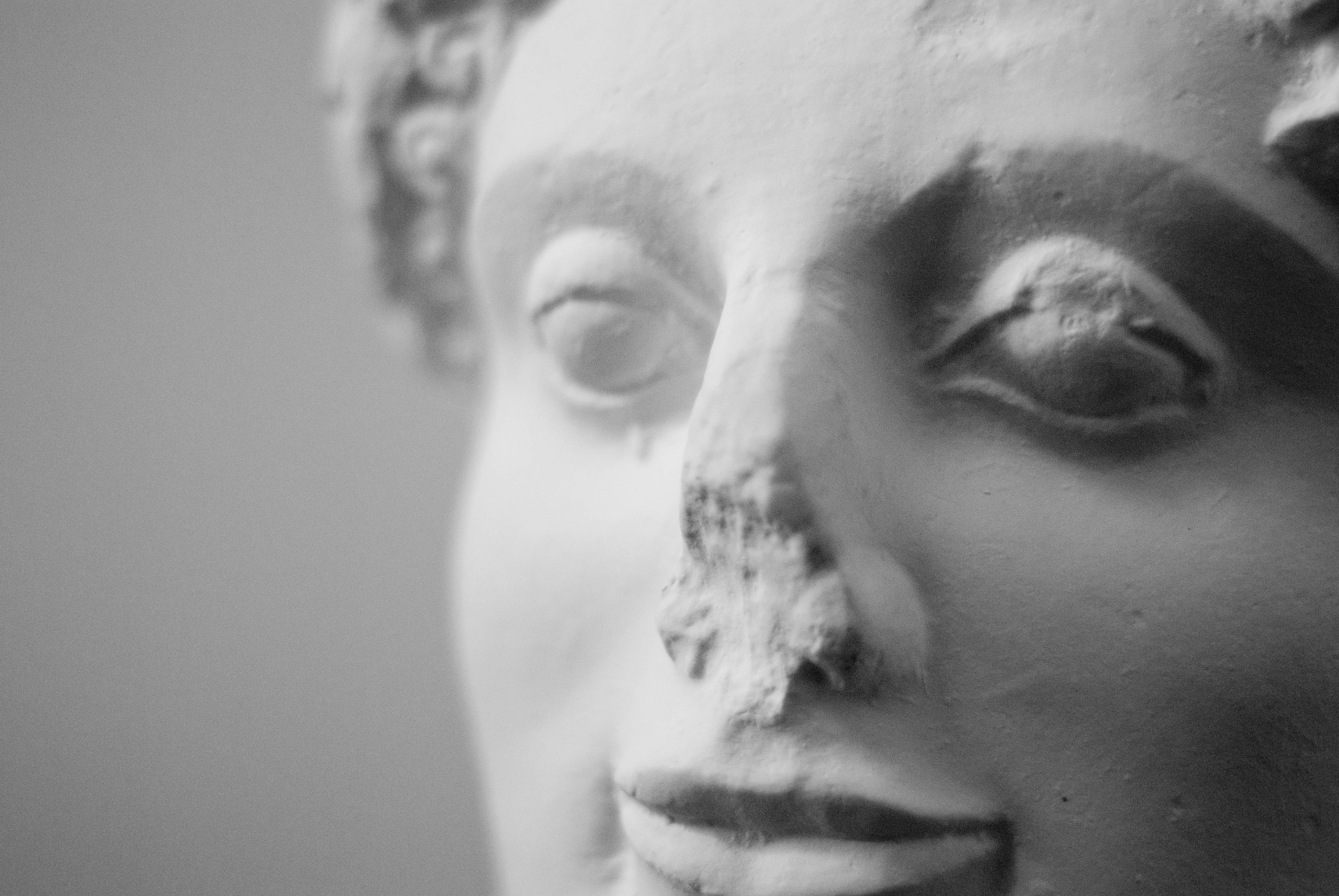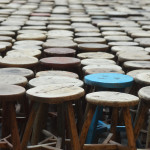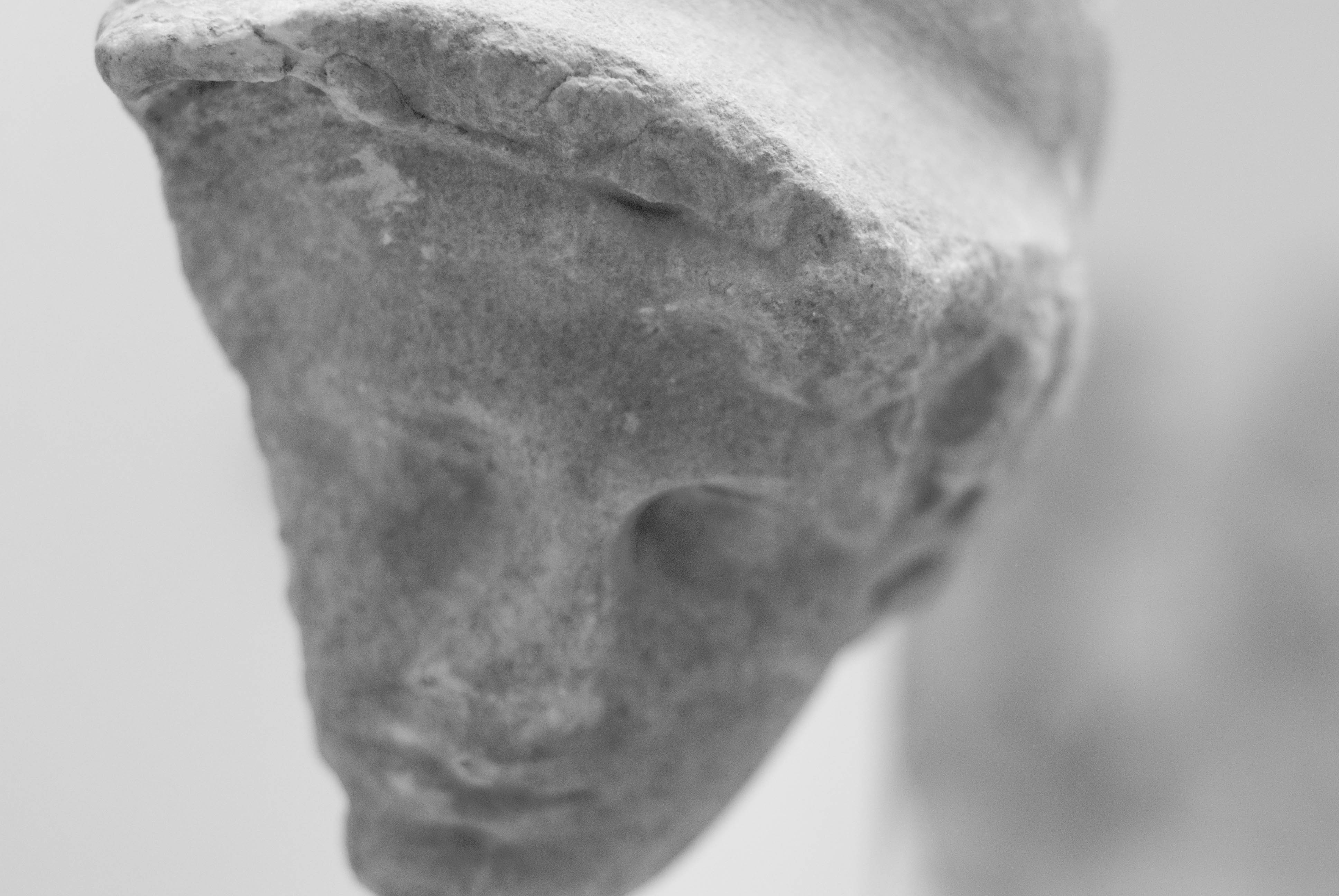
A few steps beyond the ticket counter and the museum store, the faces and body-parts of Greek gods and warriors glow under a gigantic opaque glass canopy. The air is as sticky as the inside of a greenhouse and hundreds of museum goers cycle through the reconstructed altar in silence. At every level of the marble cavern, faces and bodies chiseled in the 2nd century B.C.E. are posted beside pillars, along staircases and upon walls; their details ground and smashed from the wear of war, time and excavation. What now stands as one of Berlin’s (and the world’s) most prized and impressive collections of antiquity, was originally built into the side of a rolling hill in modern day Pergamum, Turkey.
German archeologists and engineers spent the last ten years of the 19th century, cutting the elaborate stone monument from its foundations and moving the ancient marble to the Pergamon Museum on Berlin’s Museum Island. More than a hundred years later, the government of Turkey is leading the charge for the return of Zeus and his altar to the place of his formation. Of course, the appropriation of the Pergamon Altar represents just one of many ties between the two nations. A short metro ride from the museum drives this point home. A few months ago, when I visited (and took these pictures) I noticed many of the most vibrant and interesting neighborhoods in Berlin are Turkish—in fact, Berlin happens to boast the highest population of Turkish-born people outside of Turkey.

